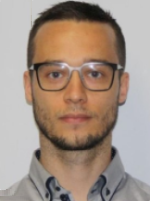The PhD defence and trial lecture are fully digital and streamed using Zoom. The host of the session will moderate the technicalities while the chair of the defence will moderate the disputation.
Trial lecture
Thursday 20 January, 15:00-15:45, Zoom
The use of transfer learning in deep learning seismic applications
Conferral summary (in Norwegian)
Innsamling og behandling av seismisk data, før geologisk tolkning, består av flere prosesseringssteg som er både beregningskrevende og ofte krever en manuell vurdering. Oppløsning og kvalitet på de seismiske bildene er også avhengig av kvalitet på prosesseringsmetodene. I denne doktorgradshandlingen har målet vært å utvikle metoder som benytter gjennombrudd innen kunstig intelligens for å forbedre prosessering av de geofysiske dataene slik at den seismiske avbildningen får høyere oppløsning og bedre kvalitet, som igjen letter den geologiske tolkningen.
Main research findings
Popular scientific article about Greiner’s dissertation:
Deep learning in seismic wavefield reconstruction and resolution enhancement
In this project, the goal has been to develop methods that use breakthroughs in deep learning to improve processing of seismic data such that the seismic image has a higher resolution and improved quality. One of the challenges of deep learning in seismic processing is the absence of high-quality training data. In this project, we have therefore investigated different approaches to deal with the problem of missing training data. The first approach is well suited for marine collection where one can utilize similarities between acquisition domains, to train a neural network in a spatial direction with dense sampling and apply the trained neural network in a direction with sparser sampling.
In the second approach, we investigated the problem where we do not have access to a labeled training data set to train the neural network. In this approach, we developed an unsupervised method that uses theory from image inpainting combined with inverse theory and formalized it to fit the seismic data problem. In the most recent work, it has been illustrated how one can physics to generate training data, where this training data can then be used to create the prediction models.
Photo and other information:
Press photo: Thomas André Larsen Greiner, portrait; 250px. Photo: Private
